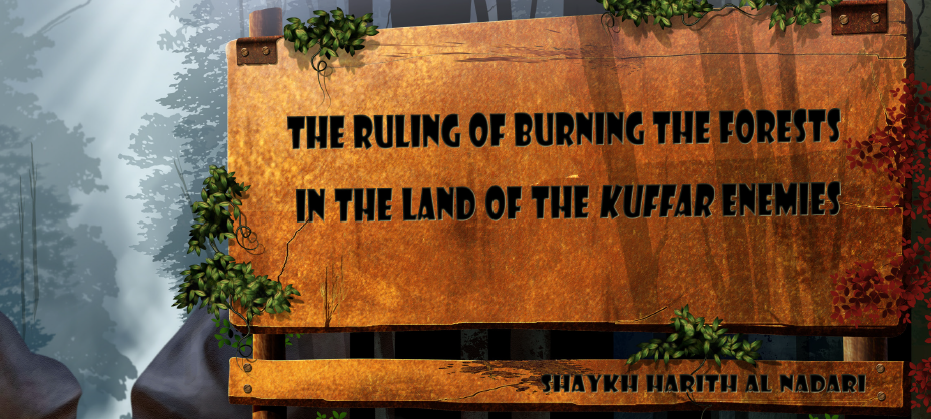
An image from the most recent issue of Inspire magazine, which is reportedly produced by Al-Qaeda in the Arabian Peninsula. Several articles in the magazine advocate the use of wildfires as a terrorist tactic.
Public Intelligence
The Federal Bureau of Investigation, Department of Homeland Security and fusion centers around the country are warning that terrorists are interested in using fire as a weapon, particularly in the form of large-scale wildfires near densely populated areas. A newly released DHS report states that for more than a decade “international terrorist groups and associated individuals have expressed interest in using fire as a tactic against the Homeland to cause economic loss, fear, resource depletion, and humanitarian hardship.” The report notes that the tactical use of fire as a weapon is “inexpensive and requires limited technical expertise” and “materials needed to use fire as a weapon are common and easily obtainable, making preoperational activities difficult to detect and plot disruption and apprehension challenging for law enforcement.”
Though law enforcement has been warning of the use of fire as a weapon for years, the recent fervor over wildfires as a potential terrorist tactic is largely due to Inspire magazine, a slick online publication that is reportedly produced by Al-Qaeda in the Arabian Peninsula. The most recent issue of Inspire featured multiple articles on the use of wildfire as a weapon in jihad, including a complete guide on creating an “ember bomb” that would likely have a “high failure rate when manufactured and utilized by untrained or inexperienced personnel” according to the DHS report. The FBI has also separately warned about the latest issue of Inspire, which “instructs the audience to look for two necessary factors for a successful wildfire, which are dryness and high winds to help spread the fire. Specific fire conditions that are likely to spread fire quickly are Pinewood, crownfires (where the trees and branches are close together), and steep slope fires (fire spreads faster going up a slope).” California and Montana are specifically listed in Inspire as potential targets.
How do you stop a person that wants to carry out a wildfire attack? The DHS report includes a list of potentially suspicious activities associated with the terrorist wildfire threat. Are you conducting “unusual research” related to weather, dry seasons, winds, or types of forests and vegetation? Have you done online research related to historical cases of arson? Or maybe you “conduct reconnaissance” in “remote, wooded areas, especially at night”? According to DHS, you might be a part of a terrorist plot to start wildfires all around the country. Of course, you could just be interested in nature, studying for a criminology exam or lost in a rural area at night. The report makes it clear that many of the suspicious activities listed are “constitutionally protected” and should not be considered alone as sufficient cause for investigation. However, the list ends with an ominous warning: “Preoperational activities of violent extremists in the Homeland might be difficult to detect. Agencies with local or state oversight should monitor events that might be linked to a larger terrorist operation. Suspicious activities should be reported and shared immediately.”
